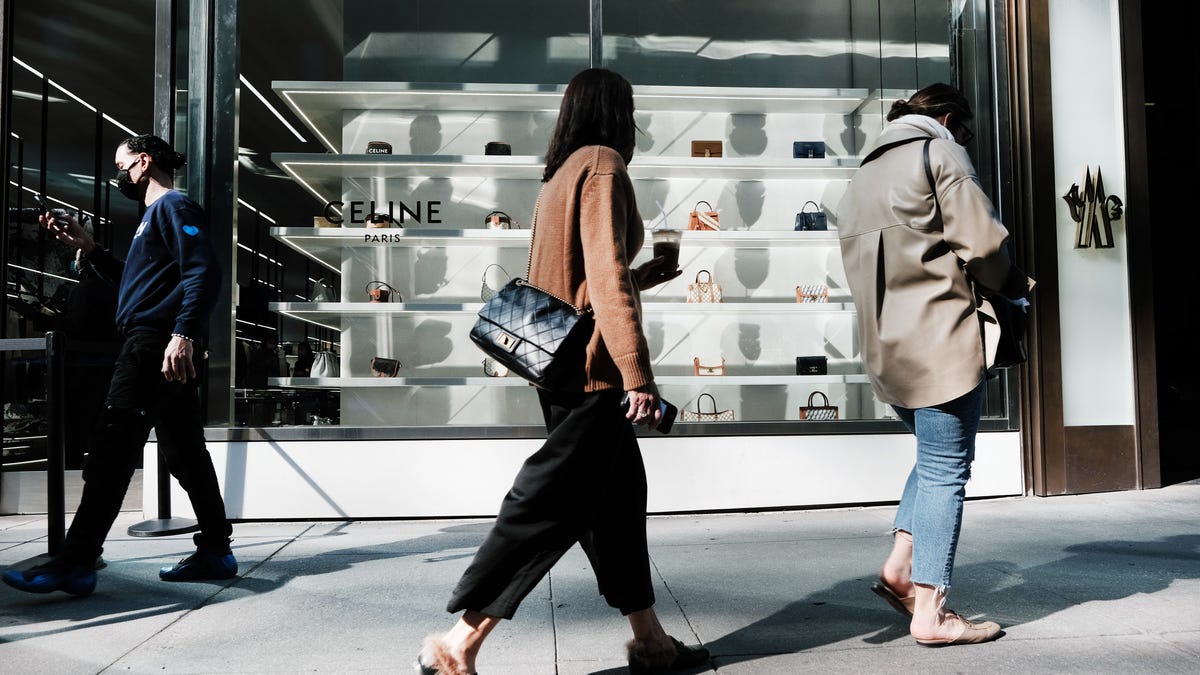Although the US has contributed to the lexicon of global fashion with casual pieces like blue jeans, baseball caps, and polo shirts, the top echelon of fashion remains Europe’s domain.
However, Estée Lauder’s purchase in November of Tom Ford—an American company with super-premium pricing—may indicate a shift in how the world perceives American brands. After fetching a valuation of $2.8 billion, the company has secured a seat at luxury’s power table.
Advertisement
That’s because Ford’s products are considered pricey even compared to other global luxury brands. A 30 ml bottle of Tom Ford Lost Cherry fragrance costs $240, a big markup compared to a same-sized bottle of Hermès D’orange Verte ($132) or Miss Dior fragrance ($72). A Tom Ford suit starts at about $5,000, not quite as high as Kiton, which can run five figures, but more expensive than a suit from Dior or Zegna, which starts around $3,000.
That’s not the usual positioning of the typical American fashion or beauty firm, which tends to aim for accessible prices like those at Coach or Kate Spade.
Europe dominates fashion’s top end
While France and Italy boast the lion’s share of the world’s top luxury brands, American fashion and beauty fortunes have historically been made in mass and sports apparel, such as Gap or Nike, or in categories such as affordable luxury—think Ralph Lauren, Tommy Hilfiger, and Calvin Klein.
Although there are some standout US gown designers, Oscar de la Renta and Vera Wang among them, those brands have never reached the size or influence of business juggernauts like Chanel or Dior.
Advertisement
Partly that’s because as a nation, the US was formed without a formal aristocratic class. Europe’s monarchies were the birthplace of luxury, explains Karla Martin, Deloitte’s fashion apparel and footwear lead.
“If you think about Burberry in London, they started out with a commission to the queen. There’s a strict apprenticeship model and, for couture, it’s something where every single element has to be sewn by hand. It requires a long time to learn,” Martin says. She notes the business was also nationalistic and exclusionary. “There were people who weren’t allowed to be in the business and we’re a younger country of immigrants.”
There’s also a certain timelessness involved. Chanel and Louis Vuitton are not dramatically changing up their look from season to season, but rather reinterpreting already familiar house codes. That’s in part the reason why Kering in November parted ways with Alessandro Michele after keeping the designer in its top creative post for seven years. Michele’s magpie eclecticism reinvigorated the brand in 2015, but sales had been slowing and his designs felt too trendy and fadlike.
Advertisement
Martin points out that a real test of a luxury brand is whether it can stand on its own apart from its founding designer. Japan has birthed acclaimed avant garde designers such as Yohji Yamamoto, Issey Miyake, and Rei Kawakubo but, while not cheap, their creations fall more under designer fashion, not a grand maison.
“It’s very much an aesthetic of that designer, and it’s hard to continue when that designer is gone. Whereas if you think about Dior, it’s managed to be quite successful with many designers who are not Christian Dior. This is how the house of Chanel is versus a Japanese designer, or Tom Ford or Ralph Lauren. The 100 years of extra history matters,” Martin says.
Americans are especially good at beauty and underwear
But Americans have proved themselves in sectors such as high-end cosmetics. Tom Ford, for instance, is known more for its fragrance and beauty than its fashion line.
Even at luxury prices, beauty still remains relatively affordable, and so in many ways is more suited to American innovation. Seven of the top ten American billionaires in the fashion and cosmetics sector stem from a single fortune: Estee Lauder. After the sale of Tom Ford, its founding designer owes his billionaire status to that company, too.
Advertisement
Another category Americans have a firm handle on: underwear. Les Wexner built his fortune on the back of Victoria’s Secret, which was once the main star at L Brands. Sarah Blakely became the youngest self-made billionaire with her shapewear company Spanx. Kim Kardashian also found a lucrative niche with her Skims line.
American fashion’s gradual maturation
It’s not just Tom Ford that’s climbing up luxury’s ladder. Capri Holdings, the parent company of American outfits Michael Kors and Jimmy Choo, is hunting for another European luxury brand to buy after its successful acquisition of Versace in 2017.
At the time of the Versace deal, there was concern there would be a culture clash between an American group and a European label. But Capri has been raising prices on all its brands to elevate positioning, and the Versace integration has gone well. Capri is targeting $2 billion in sales for the Italian label and analysts have turned more positive on the group’s prospects overall.
Advertisement
China, meanwhile, has also produced a few aspirational firms, but Fung Group, Shandong Ruyi and more recently, Lanvin Group, all have yielded disappointing results. The latter listed via SPAC recently, but the vast majority of investors in the special-purpose acquisition company backed out on the merger. Lanvin Group’s stock is hovering at about half its debut price of $10 a share.



